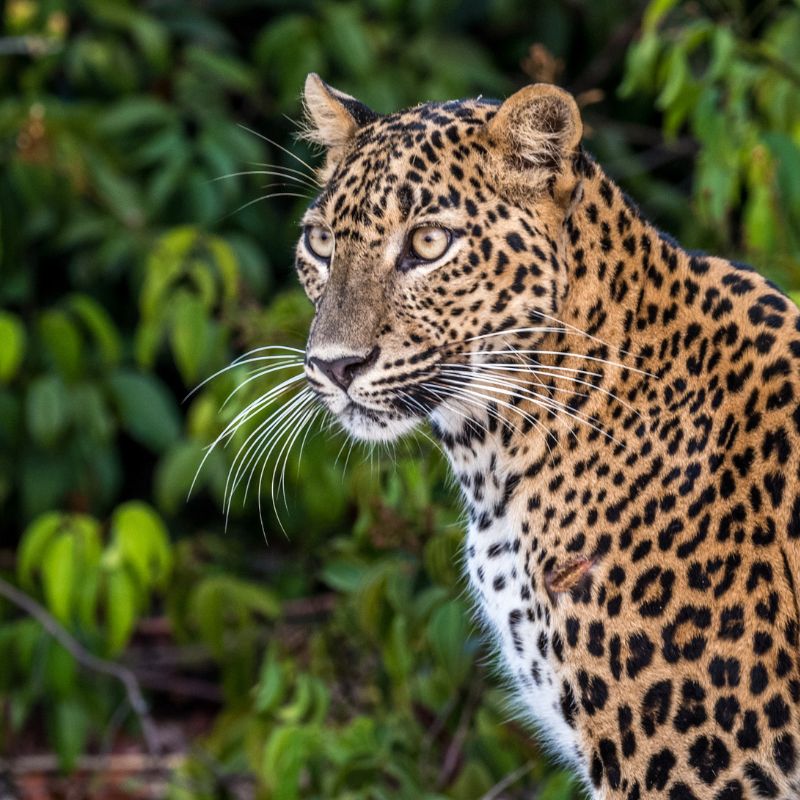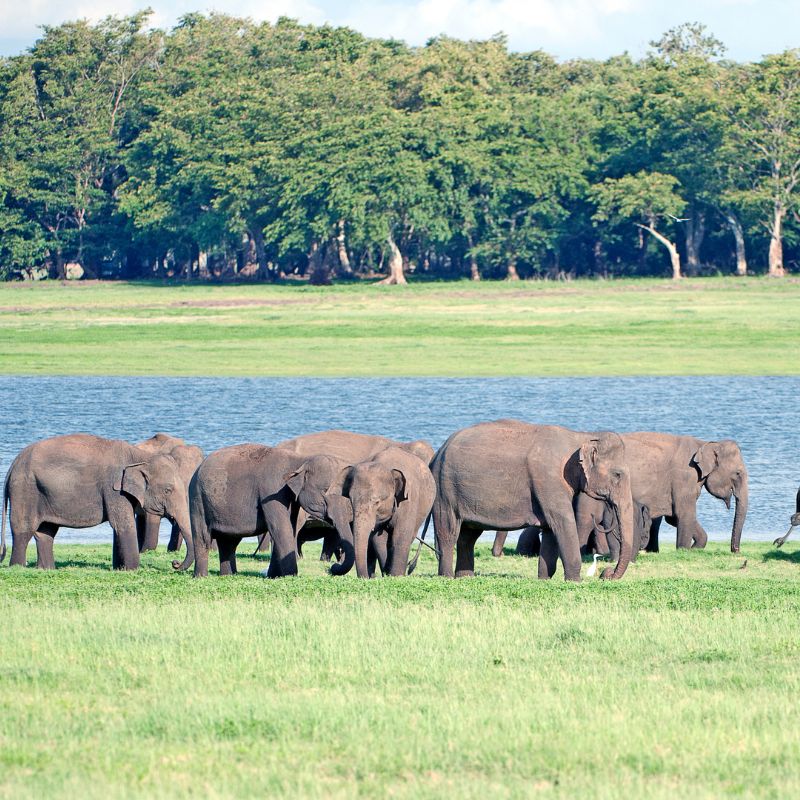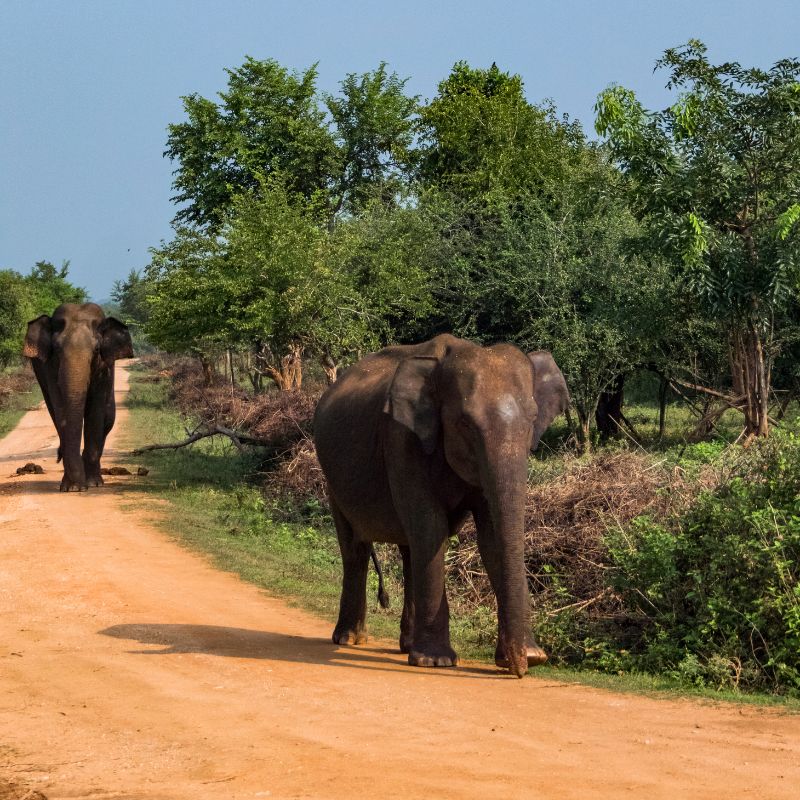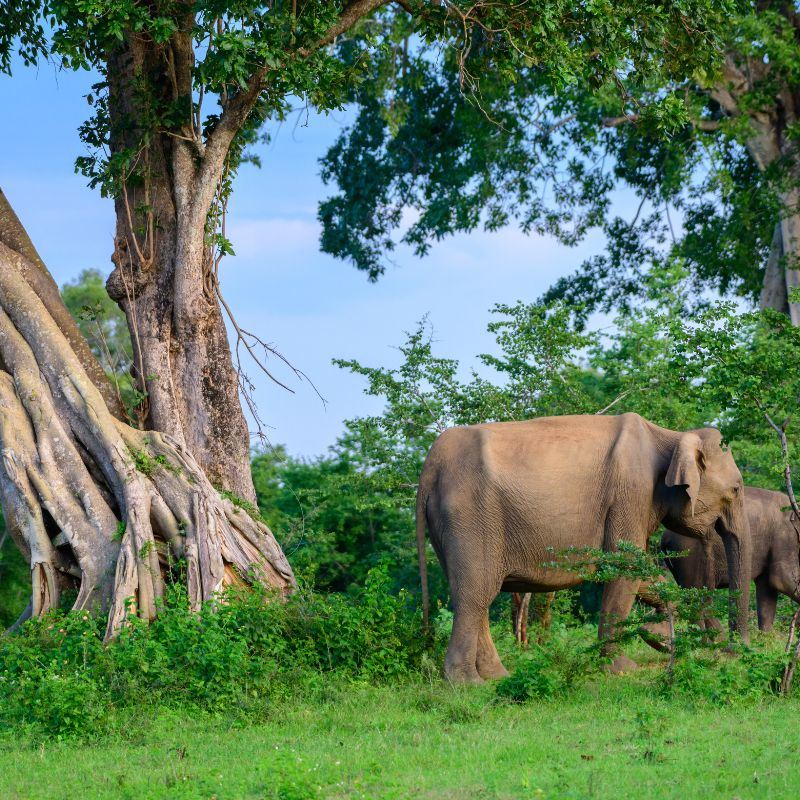Wildlife & Nature
Discover the Wild Side of Sri Lanka
Sri Lanka is a land where lush forests meet golden beaches, and every sunrise awakens a world alive with calls of the wild. From mist-covered highlands to tropical rainforests and dry-zone savannas, the island’s rich biodiversity and dramatic landscapes create a paradise for nature lovers and wildlife enthusiasts.
If you’ve ever dreamed of seeing elephants roaming freely, leopards prowling through dense jungles, or vibrant tropical birds soaring over emerald-green canopies, Sri Lanka offers all that — and much more. Let’s explore the heart of Sri Lanka’s wilderness and discover why this island is one of the best wildlife destinations in Asia.
Why Sri Lanka is a Nature Lover’s Paradise
Few places on earth pack such diverse natural beauty into a small island. Despite its size, Sri Lanka is home to 26 national parks, 8 UNESCO World Heritage Sites, and 5,800 square kilometers of protected land. Its landscapes change within hours — from dry forests and grasslands to misty mountains and coastal lagoons.
The island’s position in the Indian Ocean makes it a biodiversity hotspot, hosting over 125 species of mammals, 435 bird species, and 250 species of butterflies. Whether you’re seeking big-game safaris, birdwatching, rainforest treks, or quiet lakeside retreats, Sri Lanka lets you connect deeply with nature in authentic and sustainable ways.

Wilpattu National Park – The Land of Lakes and Leopards
Located on the island’s northwest coast, Wilpattu National Park is Sri Lanka’s largest and one of its most scenic wilderness areas. Its name means “Land of Lakes,” and these natural sand-rimmed water basins (called villus) create an ideal habitat for elephants, deer, sloth bears, and the elusive Sri Lankan leopard.
Unlike the busier Yala, Wilpattu offers a quieter and more intimate safari experience. You can explore dense forests, open plains, and shimmering lakes while spotting peacocks, painted storks, and crocodiles basking in the sun.
Highlights:
Best place to see leopards in their natural habitat
Birdwatching paradise during the migratory season
Ideal for photography and off-the-beaten-path safaris

Minneriya and Kaudulla National Parks – The Gathering of Giants
In the heart of Sri Lanka’s Cultural Triangle lies an unforgettable sight — hundreds of elephants gathering near the Minneriya Tank. Known as “The Gathering,” this natural event happens between June and September, when herds from surrounding areas come together to drink, bathe, and play in the lake’s shallow waters.
Minneriya and its nearby counterpart, Kaudulla National Park, are connected by forest corridors that elephants use for seasonal migration. Safari tours here are ideal for travelers based in Sigiriya, Habarana, or Dambulla.
Highlights:
Witness the world’s largest meeting of Asian elephants
Spot langurs, spotted deer, and a variety of aquatic birds
Accessible year-round from central Sri Lanka

Wasgamuwa National Park – The Wild Heart of Central Sri Lanka
If you’re searching for a park that’s rich in both wildlife and tranquility, Wasgamuwa National Park is perfect. Located between the Matale and Polonnaruwa districts, this park shelters elephants, water buffaloes, sloth bears, and more than 140 bird species.
Wasgamuwa is also deeply tied to Sri Lankan history — it’s believed that ancient battles took place in the surrounding forests. Today, it’s a sanctuary of peace where nature thrives undisturbed.
Highlights:
Great for offbeat wildlife safaris
Home to elephants, crocodiles, and monkeys
Beautiful mix of rivers, wetlands, and jungle trails

Horton Plains National Park – The Roof of Sri Lanka
Perched in the central highlands at over 2,000 meters above sea level, Horton Plains is unlike any other park in Sri Lanka. Mist-covered grasslands stretch toward the horizon, interrupted by waterfalls and cloud forests.
The park’s most iconic viewpoint, World’s End, offers a dramatic 870-meter drop overlooking tea estates and valleys below. You’ll also find endemic species like the sambar deer, Sri Lanka white-eye, and purple-faced langur.
Highlights:
Stunning hikes to World’s End and Baker’s Falls
Home to unique highland flora and fauna
UNESCO World Heritage Site within the Central Highlands

Yala National Park – Sri Lanka’s Safari Capital
No wildlife journey through Sri Lanka is complete without visiting Yala National Park, the country’s most famous and most-visited park. Stretching across the southeast coast, Yala is home to one of the world’s highest leopard densities, making it your best chance to spot this majestic predator.
The park is divided into zones, with Block 1 being the most popular. Along with leopards, you can encounter elephants, crocodiles, sloth bears, and colorful birdlife — all set against a backdrop of scrubland, lagoons, and rocky outcrops.
Highlights:
Top destination for leopard spotting
Scenic safaris through coastal and jungle terrain
Ideal for wildlife photographers and adventure seekers

Kumana National Park – A Birdwatcher’s Paradise
Bordering Yala’s eastern edge, Kumana National Park is famous for its spectacular birdlife. From April to July, thousands of migratory birds arrive from as far as Siberia, filling the park’s lagoons and mangroves.
It’s also home to elephants, jackals, and turtles nesting on nearby beaches. The park’s quiet atmosphere makes it perfect for travelers who want to experience nature without crowds.
Highlights:
Birdwatching hotspot (flamingos, pelicans, herons)
Coastal lagoons and mangroves
Ideal for eco-travelers and photographers

Maduru Oya National Park – The Land of Elephants and Waterways
Located in the island’s eastern dry zone, Maduru Oya combines stunning landscapes with a rich cultural heritage. The park protects several reservoirs and is home to large herds of elephants. You can also find ancient ruins hidden in the jungle, adding a touch of mystery to your safari.
Highlights:
Scenic boat safaris on the reservoir
Less crowded than other major parks
Blend of wildlife, history, and natural beauty

Sinharaja Rainforest – The Last Tropical Rainforest of Sri Lanka
A UNESCO World Heritage Site, Sinharaja Forest Reserve is the last remaining tropical rainforest on the island. Its dense vegetation shelters countless species found nowhere else on earth, including rare birds like the Sri Lanka blue magpie and green-billed coucal.
Walking through Sinharaja feels like stepping back in time — the air is alive with the sounds of cicadas, trickling streams, and birdsong echoing through the canopy.
Highlights:
Guided nature walks through lush jungle trails
Excellent birdwatching and photography opportunities
Perfect for eco-travelers and nature enthusiasts

